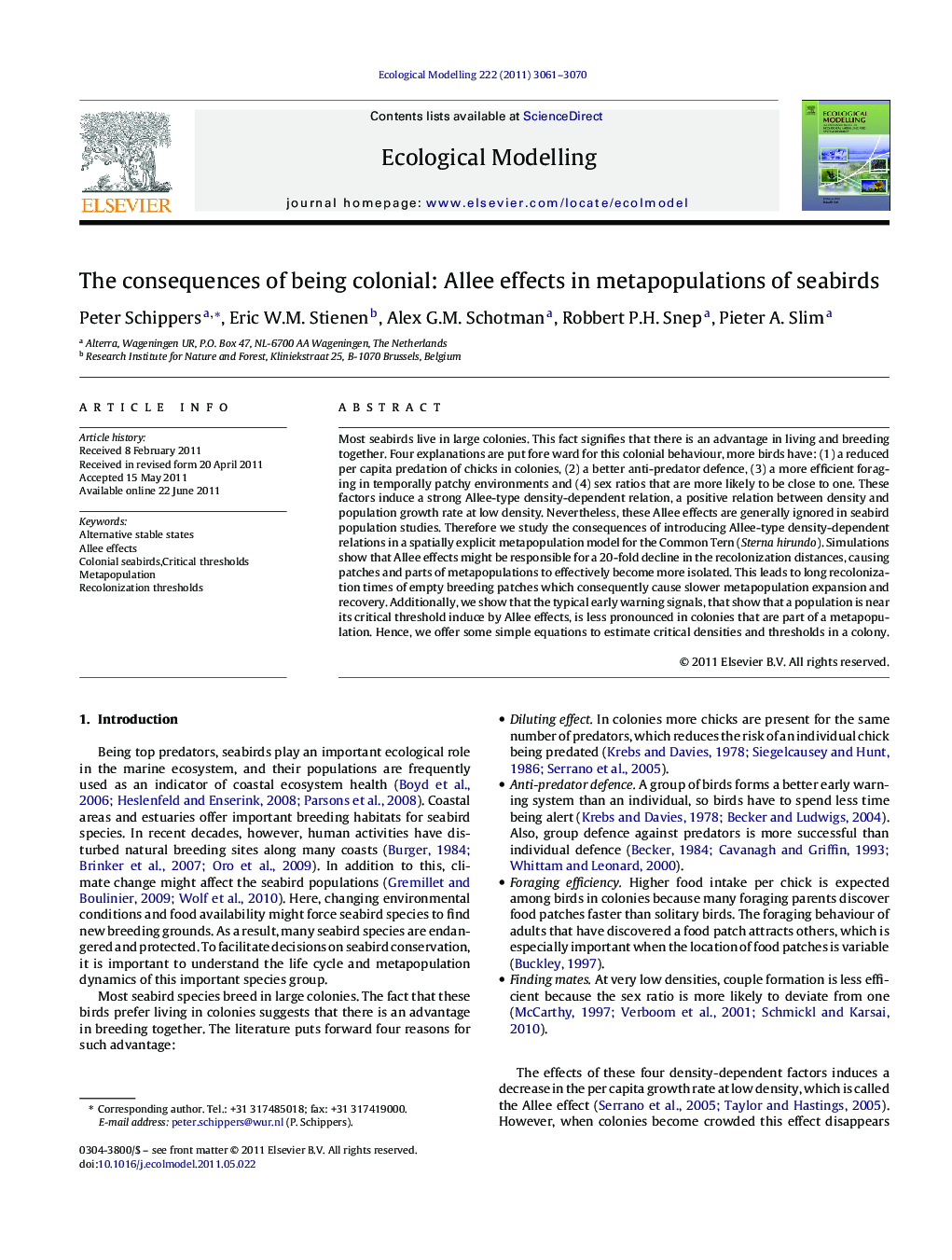| Article ID | Journal | Published Year | Pages | File Type |
|---|---|---|---|---|
| 4376667 | Ecological Modelling | 2011 | 10 Pages |
Most seabirds live in large colonies. This fact signifies that there is an advantage in living and breeding together. Four explanations are put fore ward for this colonial behaviour, more birds have: (1) a reduced per capita predation of chicks in colonies, (2) a better anti-predator defence, (3) a more efficient foraging in temporally patchy environments and (4) sex ratios that are more likely to be close to one. These factors induce a strong Allee-type density-dependent relation, a positive relation between density and population growth rate at low density. Nevertheless, these Allee effects are generally ignored in seabird population studies. Therefore we study the consequences of introducing Allee-type density-dependent relations in a spatially explicit metapopulation model for the Common Tern (Sterna hirundo). Simulations show that Allee effects might be responsible for a 20-fold decline in the recolonization distances, causing patches and parts of metapopulations to effectively become more isolated. This leads to long recolonization times of empty breeding patches which consequently cause slower metapopulation expansion and recovery. Additionally, we show that the typical early warning signals, that show that a population is near its critical threshold induce by Allee effects, is less pronounced in colonies that are part of a metapopulation. Hence, we offer some simple equations to estimate critical densities and thresholds in a colony.
► Most seabirds live in large colonies. ► This fact induces Allee-type density-dependent relations. ► We test these relations with a metapopulation model of seabirds. ► Allee-type density-dependent induces long recolonization times. ► This hampers seabird expansion and resilience.
